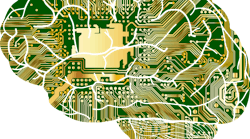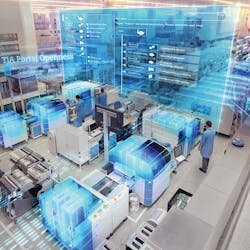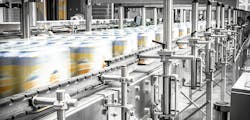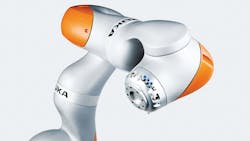Download this article as a .PDF
At its core, machine learning studies the construction of algorithms and learns from them to make predictions on data by building models from sample inputs. If we further break it down, machine learning borrows heavily from computational statistics (prediction modeling using computers) and mathematical optimization, which provides methods, theory and application data to those models. In essence, it creates its own data models based on algorithms and then uses them to predict defined patterns within a range of data sets.
Machine-learning algorithms can be broken down into five types: supervised, unsupervised, semi-supervised, active, and reinforcement, all of which act just like they sound. Supervised algorithms are programmed and implemented by humans to provide both input and output as well as furnishing feedback on predictive accuracy during training. Machine learning will then use what it has learned and apply it to introduced data sets. Unsupervised requires no training and relies on “deep learning” (an aspect of AI that automates predictive analytics) to analyze data, which it uses to predict data sets. Semi-supervised is provided with incomplete algorithms or training sets and learns by completing the missing components. Reinforcement learning provides feedback to the program as it completes actions in a dynamic environment and extrapolates predictive data sets by learning from said actions.
Siemens MindSphere helps to optimize automation systems and facilities. (Courtesy of Siemens)
There are a considerable number of algorithmic approaches to machine learning, and that number continues to grow given that AI, Deep Neural Networks (DNNs), and machine learning (all part of the same family) are still in their infancy. While volumes of information are written for each, they were all created for specific applications. For example, reinforcement learning can be found in self-driving vehicles and computer opponents in video games while decision-tree learning is used extensively for mining big data.
That being said, machine learning has a surprising number of applications that move beyond self-driving vehicles and video games, including the medical industry (helps physicians make a more informed diagnosis), the financial industry (portfolio management, stock trading, fraud detection, etc.), and retail/customer service (pinpoint customer behaviors for advertisements), to name just a few. While those examples are perhaps more commonly known for those with little knowledge of machine learning, it may be surprising to see that those AI algorithms are finding their way into the manufacturing industry, providing everything from increased production capacity to more efficient plant operations and everything in between.
Preventative maintenance/repair, condition monitoring (machine efficiency), and optimizing supply chains can all be had with integrated machine-learning algorithms. Manufacturers are also starting to integrate AI programs into their automation processes and the inclusion of other advanced technologies (IoT, modular/adaptive hardware, distributed intelligence, etc.), is helping manufacturers gain a foothold in the 21st Century’s Industry 4.0 revolution. According to a report from TrendForce, smart manufacturing is expected to undergo significant growth in the next three to five years and estimates the manufacturing market will bring in $200 billion this year alone—and is expected to grow to $350 billion by 2020, a growth rate of 12.5%.
If manufacturers want to remain competitive, they will have to eventually (if they haven’t already) incorporate these new technologies into their plant infrastructure or modernize their legacy systems, a key component of which is industrial automation. With consumers growing more conservative in their product views (quality and customization), being able to change production systems in a short amount of time is crucial, and advanced hardware and software help provide that path without the need for retooling or systemwide reprogramming. Machine learning in this area and all aspects of industrial automation can be beneficial—it can monitor and help perform maintenance on production machinery, reprogram industrial PCs (distributed intelligence) for new product production, and optimize the efficiency of plant operations over the entire supply chain.
SPONSORED RESOURCES
- Should you power your industrial sensors with a linear or switching regulator?
- Wide Vin Power Supply Reference Design for Space-Constrained Industrial Sensors
- Solve Point-of-Load Power Design Challenges in Single Board Computer Applications
While there is a host of manufacturers incorporating machine learning into their production platforms, there are currently four businesses leading the way in this area with the different ways they are utilizing the technology. In this article, we’ll look at how these companies are using machine learning in their industrial automation and manufacturing facilities and what results it’s generating for those businesses, beginning with the well-known German conglomerate Siemens.
GE’s Brilliant Manufacturing Suite provides monitoring and predictive maintenance for manufacturing production platforms. (Courtesy of GE)
Mindsphere: From Production Design to Maintenance
Siemens has been using neural networks to monitor its steel plant operations and improved efficiency since the 1990s and currently employs around 200 employees to advance machine learning in the coming years. One of the company’s more exciting technologies that utilize AI for automation and other systems is its MindSphere open-IoT OS, which lets it monitor, record, and analyze nearly every facet of manufacturing—from production design to maintenance.
“Our industrial operating system MindSphere also benefits from intelligent data analyses—with regard to predictive maintenance, for example, as well as through its ability to optimize the operation of systems and facilities. The software’s ability to analyze operating data and sensor measurements, allows it to spot anomalies in facilities and automation systems,” explains Siemens AG Chief Technology Officer Roland Busch. Siemens can use the AI platform on legacy systems by attaching sensors and communication nodes to older motors and transmission systems to provide data to MindSphere, which can analyze the information and draw conclusions on their optimum performance, making predictive maintenance possible.
The OS is so successful that the company uses it for other industries, including electrical power grids (classify and localize disruptions), railway trains (predictive maintenance utilizing vehicle’s operating data), and wind parks (optimize wind turbine position based on weather data). Siemens hopes to integrate the MindSphere system in the near future for a new product known as ClickToMake—a production-as-a-service platform or a type of point-and-click vision of a self-configuration factory.
KUKA’s LBR-iiwa industrial robot uses machine learning for increased safety for human/robot collaboration. (Courtesy of KUKA)
At GE, Spotting Potential Problems
GE has followed suit, developing its own machine-learning industrial automation operating software. Similar to Siemens’ MindSphere, GE’s Brilliant Manufacturing Suite is a production-wide system that tracks, monitors, and processes everything in the manufacturing cycle to find possible problems and inefficiencies before they become prevalent. According to GE, the premise of the software suite is to spot potential problems and provide possible solutions.
The system is powered by GE’s Predix software platform, which is an IIoT software package that garners data from sensors and monitors production hardware for potential problems. The company has already spent around $1 billion developing the Brilliant Manufacturing Suite, $200 million of which went to building the Brilliant Factory (back in 2015) in India, claiming it improved equipment effectiveness by 18%. In total, GE has established seven factories outfitted with the Brilliant Manufacturing Suite, which has boosted its production efficiency across the board.
Fanuc utilizes Preferred Networks’ machine-learning algorithm to perform new tasks. (Courtesy of Fanuc)
Machine Learning for Robots
Chinese-owned German manufacturer KUKA is one of the world’s largest industrial robot and factory automation manufacturers and produced its first industrial robot back in 1973. The company has since taken an interest in machine learning, most notably for human-robot collaboration in manufacturing, where safety is paramount. While some industrial robots rely on sensors and predefined force pressures for safety measures, KUKA uses machine learning to achieve the same goal.
The company’s flagship LBR-iiwa industrial robot, for example, learns from its surroundings and movement repetition via simulations—position the robotic arm in a virtual environment and it will plot those positions in the real world using coordinates. According to Project Manager Jakob Berghofer, “The LBR iiwa is sensitive, compliant, safe, precise, and flexible, and is equipped with mechanical systems and drive technology for industrial operation. This makes it possible to automate delicate and complex assembly tasks in which the use of robots was previously inconceivable.”
Not only does KUKA employ these robots in its manufacturing plants, but others have also taken notice and have incorporated them into theirs, including BMW, which has recently added them to its Munich facility production line, working side by side with their human counterparts. It’s only a matter of time before others follow suit and incorporate machine-learning robots into their factories.
Japanese industrial robotics company Fanuc utilizes machine learning to perform manufacturing tasks in a similar fashion as KUKA, albeit using a different method or algorithm. The company collaborated with prominent Japanese AI developer Preferred Networks to develop industrial manufacturing robots that can learn on their own with minimal input. More accurately, they learn using a deep reinforcement learning platform to train itself over time. For example, you show the robot what task you would like it to perform, and it will take video of that job and try to duplicate it through repetition until the task is achieved with a high accuracy.
The successful development of smart robots has other companies taking an interest in Fanuc’s endeavors. The robotics company contracted with Cisco and Rockwell Automation last year to develop and deploy the machine collaboration platform FIELD (Fanuc Intelligent Edge Link and Drive) for smart automation manufacturing. In essence, FIELD brings data analytics to intelligent robotic applications for a new level of efficiency through predictive analysis.
A short time later, GPU manufacturer Nvidia took notice and offered up its chip technology to enhance the FIELD platform with a shorter learning time for manufacturing robots. The idea is if it takes a robot eight hours to learn specific tasks, then eight robots could learn it in just one hour. Fanuc hopes that the latest developments will help power the factories of the future.
These companies are leading the forefront of development when it comes to machine learning in industrial automation, and while these developments are just baby steps into a much larger world, they are significant and paint a picture of the future where Industry 4.0 is the standard in manufacturing. The IoT, cognitive computing/AI, the cloud, sensor suites, and robotics are all just modular parts that makeup what modern manufacturing is becoming. The technology is already being implemented in most modern factories in some form or another, helping manufacturers to remain competitive in an ever-changing world with ever-changing technology.
SPONSORED RESOURCES






